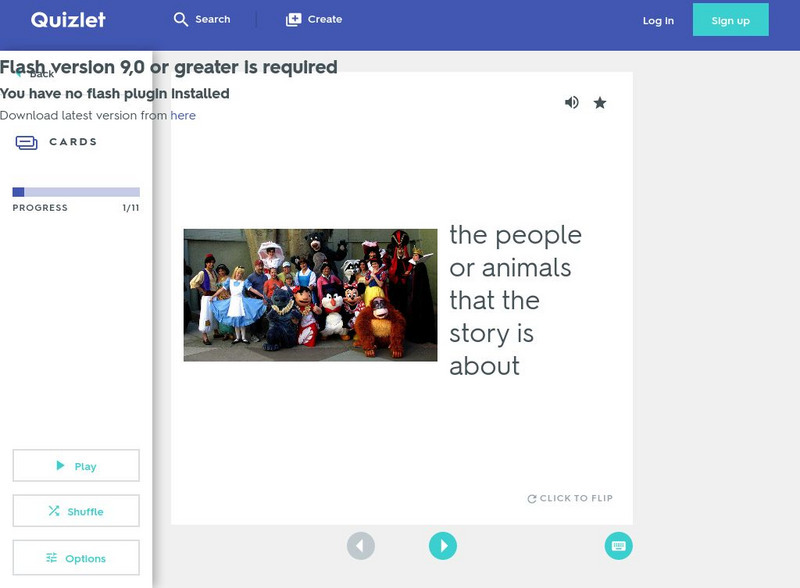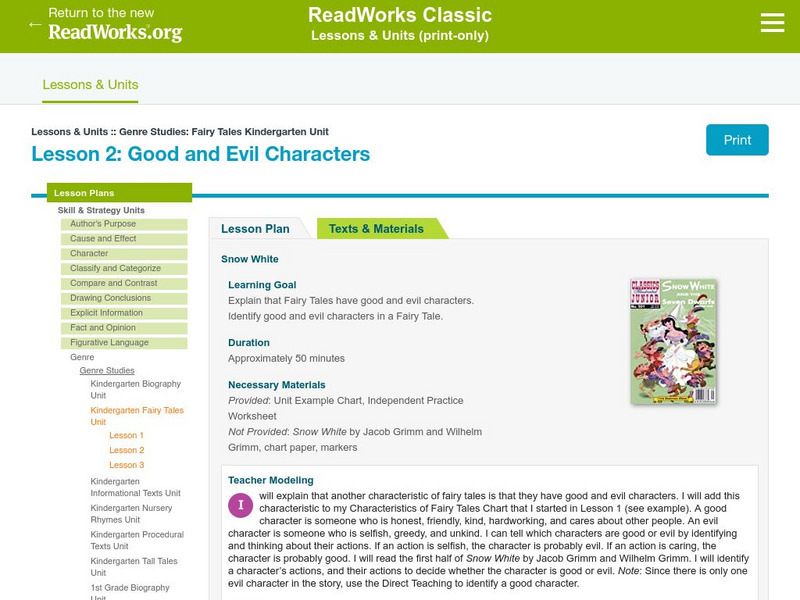Read Works
Read Works: Plot 1st Grade Unit
[Free Registration/Login Required] A series of three lesson plans designed to teach students to identify problems and solutions in fiction text and to retell a story's problem and solution in sequence. Students learn to identify the plot...
Read Works
Read Works: Setting 1st Grade Unit
[Free Registration/Login Required] A series of three lesson plans designed to teach students to use pictures and word clues to determine the setting of fiction texts. Lessons are based on the books The Cow Who Wouldn't Come Down by Paul...
Read Works
Read Works: Setting 3rd Grade Unit
[Free Registration/Login Required] This is series of two lesson plans designed to teach students to visualize the setting and determine its effect on characters in a fiction text. Lessons are based on two short texts and the book...
Annenberg Foundation
Annenberg Learner: Interactives: Literature: What Makes a Good Short Story?
This interactive exhibit takes learners on a literary journey through the classic short story.
Read Works
Read Works: Grade 2: Two Lesson Unit: Setting
[Free Registration/Login Required] A set of two lesson plans designed to teach students to use context clues to identify the setting and changes within it. Lessons are based on the books Bigmama's by Donald Crews and The Stories Julian...
Read Works
Read Works: Fourth Grade: Two Lesson Unit: Setting
[Free Registration/Login Required] A two-lesson unit on setting where students use book The Three Brothers: A German Folktale by Carolyn Croll to show how the setting effects the plot of a story, and the book Even More Short and Shivery:...
Read Works
Read Works: Setting Kindergarten Unit: Where
[Free Registration/Login Required] Use the book Gaspard at the Seashore by Anne Gutman to teach clues students can use to determine where a story takes place. The book must be provided by the teacher, but downloadable worksheets for...
Other
Fiction Writing Tips: Creating a Vivid Setting
Some excellent guidelines to consider when evaluating your setting in a short story or novel. Discusses the importance of setting, some examples, as well as practical advice in setting your story. W.11-12.3d Sensory/precise lang narratives
Wisconsin Response to Intervention Center
Wisconsin Rt I Center: Story Writing Frames [Pdf]
Teachers will learn how to use story writing frames with their students. Teachers will learn how to implement story frames; measure progress with story frames; and find research to support using story frames. A reproducible story frame...
Shmoop University
Shmoop: Julius Caesar Analysis: Literary Devices in Julius Caesar
A discussion of the literary devices used by Shakespeare in The Tragedy of Julius Caesar. Each device is linked to additional pages with more detailed information and examples.
Lumen Learning
Lumen: Reading and Interpreting Literary Texts: How to Analyze a Short Story
This lesson focuses on analyzing a short story including all of the elements of a short story such as setting, plot and structure, and characterization.
Love To Know Media
Your Dictionary: "Gift of the Magi" Literary Terms
This article focuses on literary terms for the "Gift of the Magi" including the narrator, characters, climax, repetition, resolution, setting, irony, theme, and symbolism.
Other
University of North Carolina: Glossary of Literary Terms
This site is provided for by the University of North Carolina at Pembroke. Over forty literary terms defined by college students, each with thorough examples.
PBS
Pbs Learning Media: Silly Story Builder: Martha Speaks
This activity will help children build vocabulary, become familiar with essential parts of a story, and develop story sequencing skills. They can create silly stories by drawing story parts out of a bag.
Quizlet
Quizlet: Story Elements (1St Grade): Test
Students will be asked 10 questions about story elements on this test. Six multiple choice and five true/false questions appear on this assessment. A printable version of this assessment is also available. Picture cures are provided next...
Quizlet
Quizlet: Story Elements (1St Grade) Match
This interactive game of "Match" assesses students' knowledge of story element definitions. Students will match the correct definition of a story element to its corresponding definition. Picture cues are provided on this review resource.
Quizlet
Quizlet: Story Elements (1St Grade): Flashcards
These interactive flashcards provide definitions for different story elements. Engaging picture cues are provided for each flashcard, and students can play the audio to hear the words and definitions read aloud.
Read Works
Read Works: Lesson 2: Good and Evil Characters
This lesson will allow students to understand why Fairy Tales have good and evil characters and identify good and evil characters in a Fairy Tale.
Better Lesson
Better Lesson: rl.k.3 With Prompting and Support, Identify Characters, Settings,
This landing page provides different lesson plan choices on teaching RL.K.3 With prompting and support, identify characters, settings,
Quizlet
Quizlet: R.3 Analyze How and Why Individuals, Events, or Ideas, Develop/interact
Please align to CCSS.ELA-Literacy.CCRA.R.3 Analyze how and why individuals, events, and ideas develop and interact over the course of a text.
Other
Writing World: Four Ways to Bring Settings to Life
A great resource outlining four major ways to make settings appear more real and genuine in fiction. Deals with themes such as motion, experience, mood, and the senses. W.11-12.3d Sensory/precise lang narratives
Success Link
Success Link: Characters, Setting, Plot, Conclusion, and Summarizing a Story
This lesson plan offers a step-by-step procedure for teaching young scholars how to identify story elements and to summarize a story. It explains how to use a "Who Am I" activity, as well as a linkage activity in identifying characters...
Other
Fiction Factor: The Importance of Setting
An interesting article concerning the importance of setting to any piece of fiction. Gives good information about how setting affects characters and "world-building."
Alabama Learning Exchange
Alex: Using Fairy Tales to Teach the Short Stories
Familiar fairy tales are used as guides to help students analyze the elements of the short story: plot, theme, setting, point of view, and character.


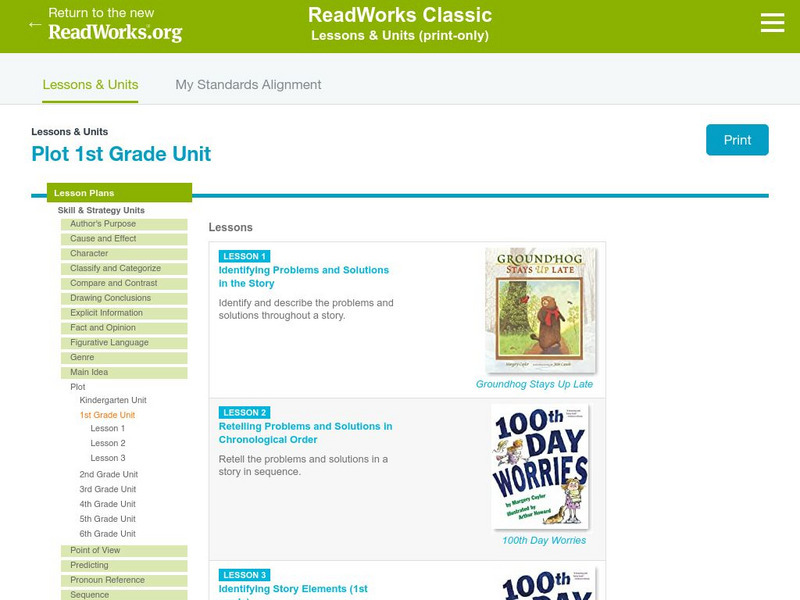
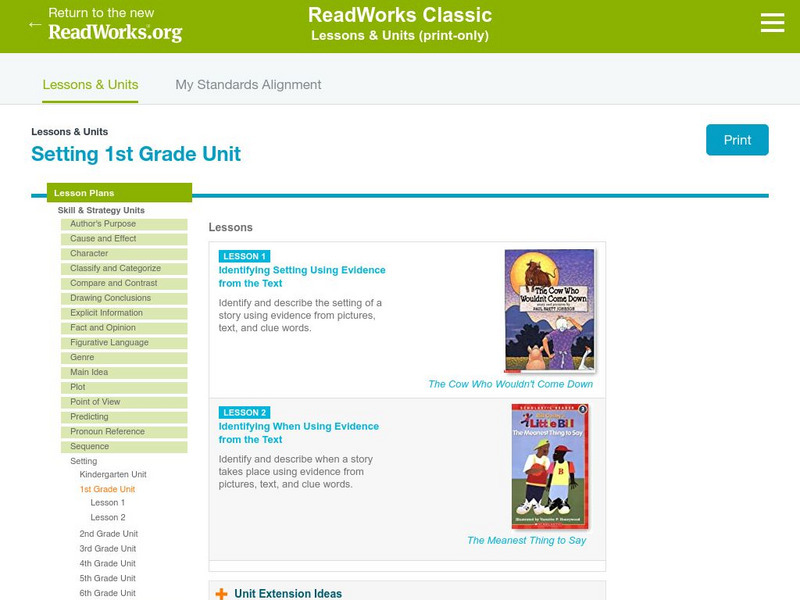
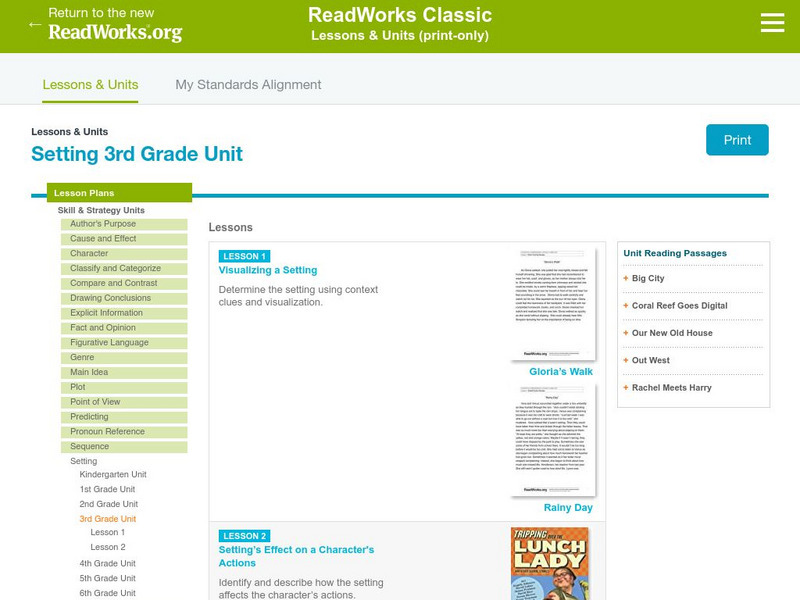



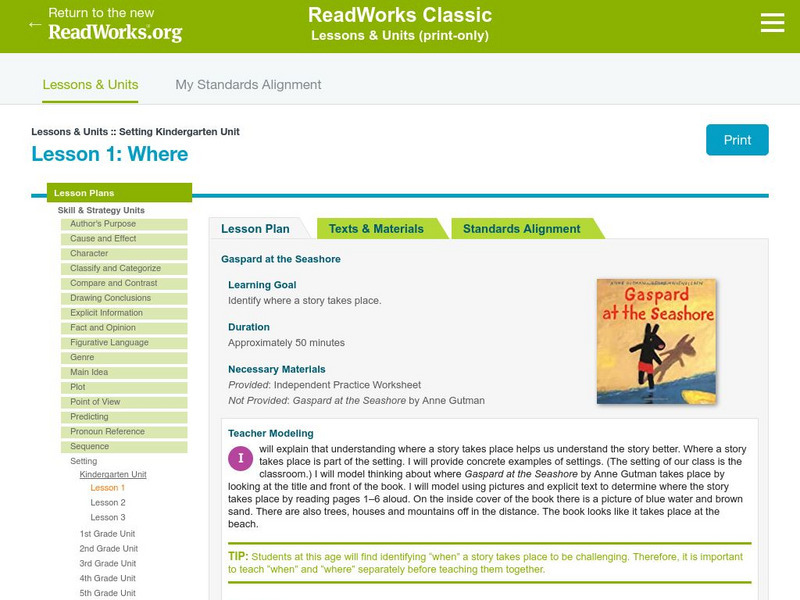

![Wisconsin Rt I Center: Story Writing Frames [Pdf] Professional Doc Wisconsin Rt I Center: Story Writing Frames [Pdf] Professional Doc](https://d15y2dacu3jp90.cloudfront.net/images/attachment_defaults/resource/large/FPO-knovation.png)





